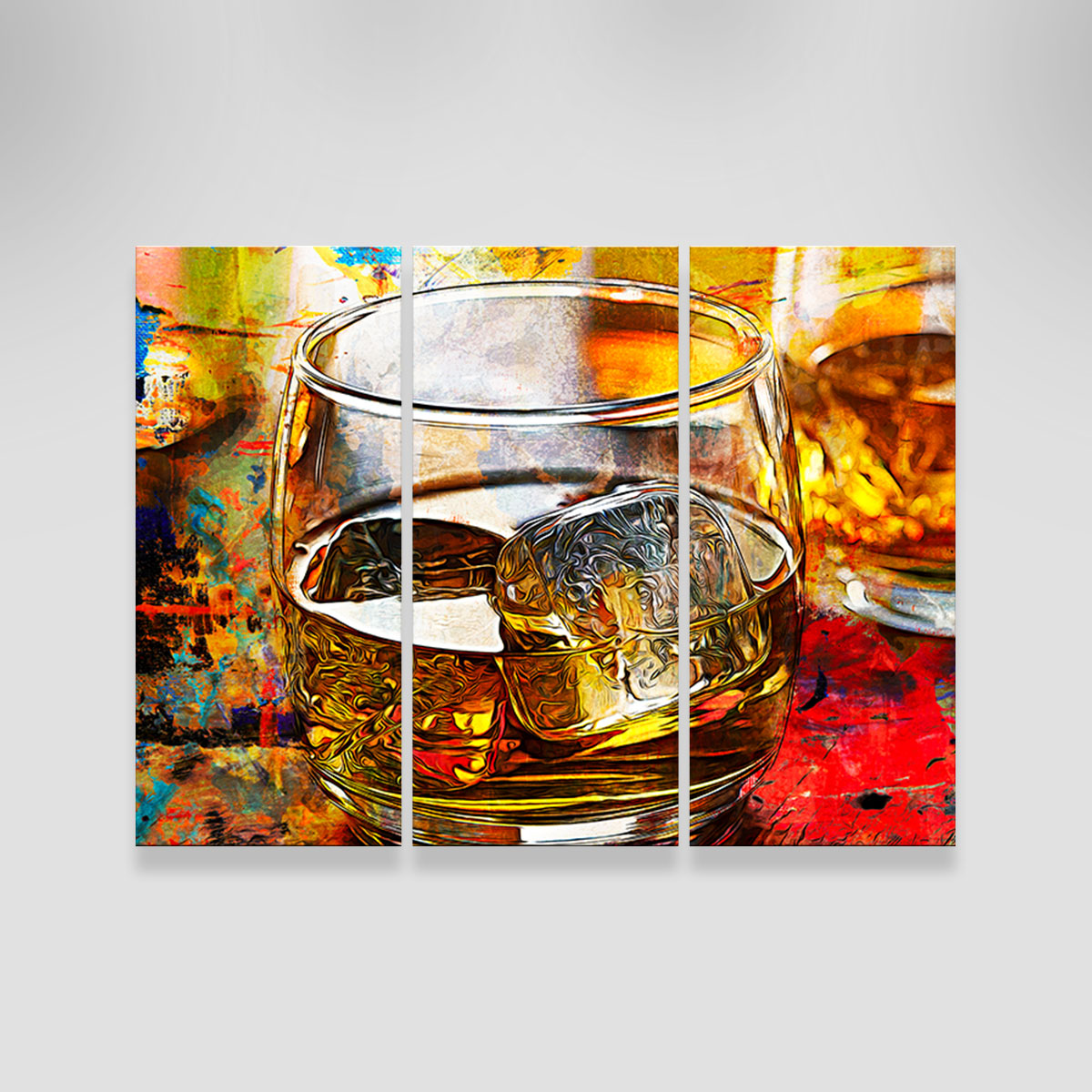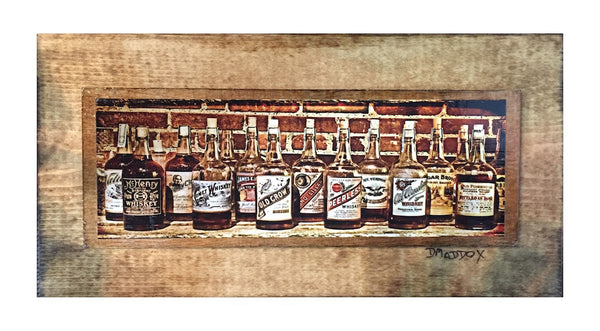Explore the World of Bourbon Art: A Journey Via Society and Craftsmanship
Explore the World of Bourbon Art: A Journey Via Society and Craftsmanship
Blog Article
The Importance of Whiskey Art in Celebrating Heritage and Craftsmanship in the Beverage Sector
The detailed partnership in between scotch art and the celebration of heritage and craftsmanship within the drink sector can not be overemphasized. With thoughtfully developed labels and bottles, scotch brands envelop their historic roots and the artisanal skills that specify their manufacturing techniques. This artistic dimension not just improves market charm but also offers as an avenue for cultural storytelling, fostering a much deeper connection between the craft and the consumer. As we discover the different facets of this topic, appealing questions concerning the influence of contemporary trends on typical methods arise, motivating additional evaluation.
The Historical Origins of Whiskey
At the heart of bourbon's appeal lies a rich tapestry of historic origins that trace back to old people. The beginnings of scotch can be connected to the distillation techniques of the Sumerians and Babylonians around 2000 BCE, where early types of fermented grain drinks began to arise. It was in the Middle Ages that the art of purification advanced substantially, specifically in Ireland and Scotland, leading to the creation of scotch as we understand it today.
The term "bourbon" itself derives from the Gaelic word "uisce beatha," indicating "water of life." This phrase highlights the social importance of scotch in Celtic cultures, where it was often connected with routines, events, and public bonding. By the 15th century, purification came to be an acknowledged craft within reclusive areas, leading the way for the establishment of legal distilleries.
As profession routes expanded, bourbon's appeal grew, going beyond local limits and catching the passion of aficionados worldwide. Realism Art. This historic trip mirrors not just the workmanship behind bourbon manufacturing however likewise its important function in social and social contexts, noting it as a considerable drink throughout history
Artistic Expression in Branding
Whiskey branding stands as a compelling intersection of artistry and business, where aesthetic identification plays a vital duty in forming consumer perception. The appearances of bourbon tags, packaging, and marketing products mirror not only the brand's tale yet likewise its core values and heritage. Through imaginative expression, distilleries communicate a narrative that resonates with customers, evoking emotions and triggering links.
Making use of color, typography, and images in branding offers to differentiate items in a saturated market. Standard motifs might stimulate a sense of credibility and craftsmanship, while modern-day designs can symbolize innovation and forward-thinking. This critical artistic instructions enhances brand acknowledgment and loyalty, enabling customers to forge an individual partnership with the whiskey they select.
Moreover, creative expression in branding usually serves as an event of local heritage. Distilleries frequently integrate neighborhood symbols or historical recommendations right into their designs, creating a feeling of area that invites consumers to engage in a more comprehensive cultural experience. Ultimately, the creativity behind bourbon branding not just enhances visual charm however additionally improves the overall narrative of the brand, promoting a much deeper admiration for the workmanship and heritage ingrained in each bottle.
Craftsmanship in Bottle Design
The creativity obvious in scotch branding expands past aesthetic identification to incorporate the workmanship entailed in container layout. Each container offers as a vessel not simply for the spirit within, yet additionally for the tale it outlines its high quality, origin, and custom. The style process calls for careful focus to information, as aspects such as closure, shape, and material contribute dramatically to the general understanding of the whiskey.
Craftsmanship in container style involves selecting top quality glass that can enhance the bourbon's shade and clearness, while also giving a responsive experience for the consumer. The shape of the container should be both visually appealing and useful, usually showing the heritage of the Website brand. Several distilleries go with unique forms or printed logos that stimulate a sense of credibility and history.
Moreover, the tag design and typography play a crucial function in communicating the brand name's narrative. Realism Art. A well-crafted bottle not just mesmerizes the customer's eye however additionally strengthens the brand name's commitment to high quality and tradition. This way, the craftsmanship of container design ends up being a vital element of the bourbon experience, merging virtuosity with a profound respect for heritage
Social Importance of Scotch Art
Celebrating custom and workmanship, the cultural importance of bourbon art transcends simple aesthetic appeals, linking with the social and historical stories of the regions where it stems. Each bottle works as a canvas, showing the unique stories, mythology, and practices that have shaped regional whiskey-making techniques. The elaborate layouts often show the heritage of the distillers, integrating icons and concepts that resonate with the culture and worths of their neighborhoods.

On top of that, bourbon art plays a crucial role in common celebrations and celebrations, acting as a tangible link in between people and their shared experiences. By appreciating the virtuosity in whiskey packaging, customers cultivate a deeper understanding and regard for the craft, inevitably enriching their pleasure of the drink itself.
Modern Trends in Whiskey Presentation
In recent times, the presentation of scotch has actually evolved to reflect contemporary preferences and fads while still recognizing conventional workmanship - Realism Art. Distilleries are progressively concentrating on visual elements that improve the general alcohol consumption experience, linking the gap between heritage and modernity
Ingenious bottle styles have actually arised, frequently integrating lasting products and imaginative tags that inform engaging tales. Several brand names currently collaborate with local artists, infusing their products with distinct visual expressions that resonate with consumers. Furthermore, limited-edition releases are typically packaged in collectible containers, including value and charm for lovers.

Conclusion
To conclude, scotch art works as an essential conduit for revealing the heritage and craftsmanship integral in the drink industry. Through elaborate branding, ingenious container layouts, and culturally substantial artistic elements, whiskey brands efficiently honor their customs find here and get in touch with customers. This creative story not just raises the admiration of bourbon yet additionally reinforces community identification and satisfaction amongst manufacturers. Inevitably, bourbon art plays a crucial duty in preserving and commemorating the abundant cultural tapestry of whiskey-making.


Workmanship in bottle style entails selecting top quality glass that can improve the scotch's color and clearness, while additionally supplying a tactile experience for the customer. In this method, the craftsmanship of container design becomes a vital aspect of the scotch experience, combining artistry with an extensive respect for heritage.
In conclusion, scotch art serves as a crucial conduit for sharing the heritage and workmanship integral in the beverage sector.
Report this page